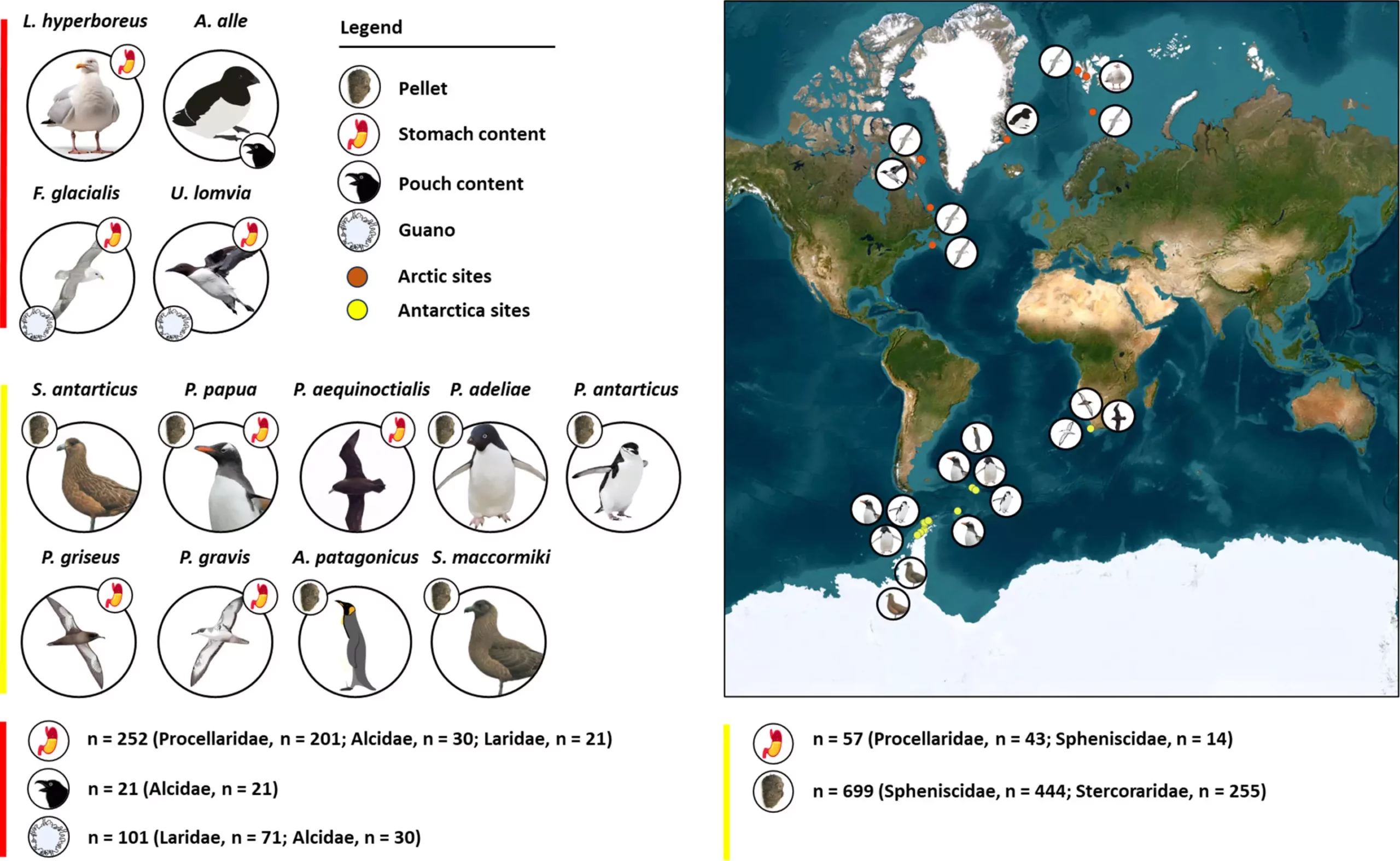Plastic pollution has become a global crisis that affects various ecosystems around the world. While it is often portrayed through dramatic images of marine animals entangled in plastic debris, the issue goes beyond what meets the eye. In the polar regions of the Arctic and Antarctica, the problem of plastic pollution is escalating, posing a significant threat to the wildlife that inhabits these areas.
A recent review published in Frontiers in Marine Science sheds light on the extent of plastic pollution in the polar regions, particularly in relation to seabirds. Researchers Davide Taurozzi and Professor Massimiliano Scalici from Roma Tre University, Italy, conducted a comprehensive analysis of 40 years of research on seabird ingestion of microplastics. The study revealed that over 13 species of seabirds living in the polar landscapes have been documented to have ingested microplastic particles.
Through the examination of various samples, including stomach contents, crop pouches, guano, and regurgitated pellets, the researchers found a disturbingly high presence of microplastics in the seabirds. In fact, at least one microplastic particle was discovered in 90% of samples from the Arctic and 97% from Antarctica. The most common types of plastic found were polyethylene, polypropylene, and polystyrene, primarily in the form of fragments originating from larger plastic objects.
Impacts on Seabirds
The ingestion of plastic particles can have severe consequences for seabirds, including blockages in their gastrointestinal tract, toxicity, oxidative stress, and immune system reactions. Furthermore, microplastics have also been detected in the food source of some penguins, such as krill, highlighting the systemic implications of plastic pollution in the ecosystem.
Conservation Concerns
The decline in seabird populations in the Arctic and Antarctica in recent years raises concerns about the need for more stringent conservation measures. With 64 species of seabirds in the Arctic and 43 species in Antarctica, the impact of human activities, including plastic pollution, tourism, fishing, and climate change, is evident. The pristine nature of the Arctic, covering approximately 6% of Earth’s surface, underscores the urgency of addressing these environmental stressors.
The findings of the study underscore the urgent need for action to mitigate the devastating impacts of plastic pollution on seabirds in the polar regions. As global citizens, it is imperative that we recognize the interconnectedness of ecosystems and take steps to reduce our plastic consumption, promote conservation efforts, and advocate for sustainable practices to protect the delicate balance of nature in these vulnerable regions. Only through collaborative and concerted efforts can we ensure a healthier future for our planet and all its inhabitants.


Leave a Reply